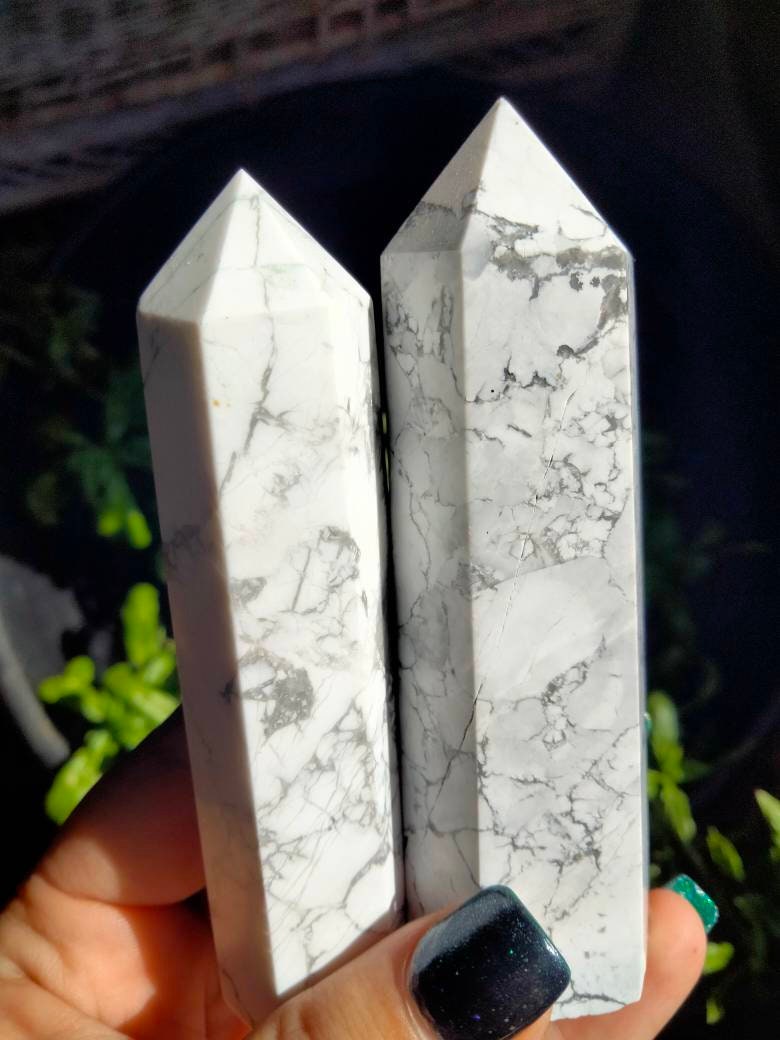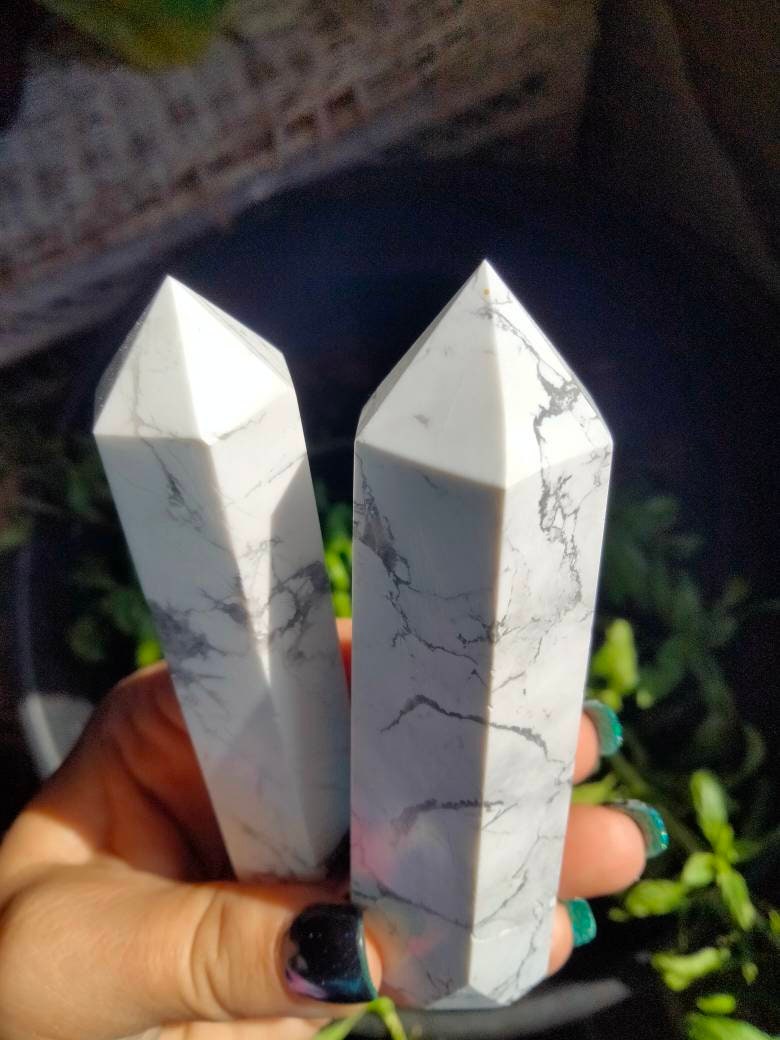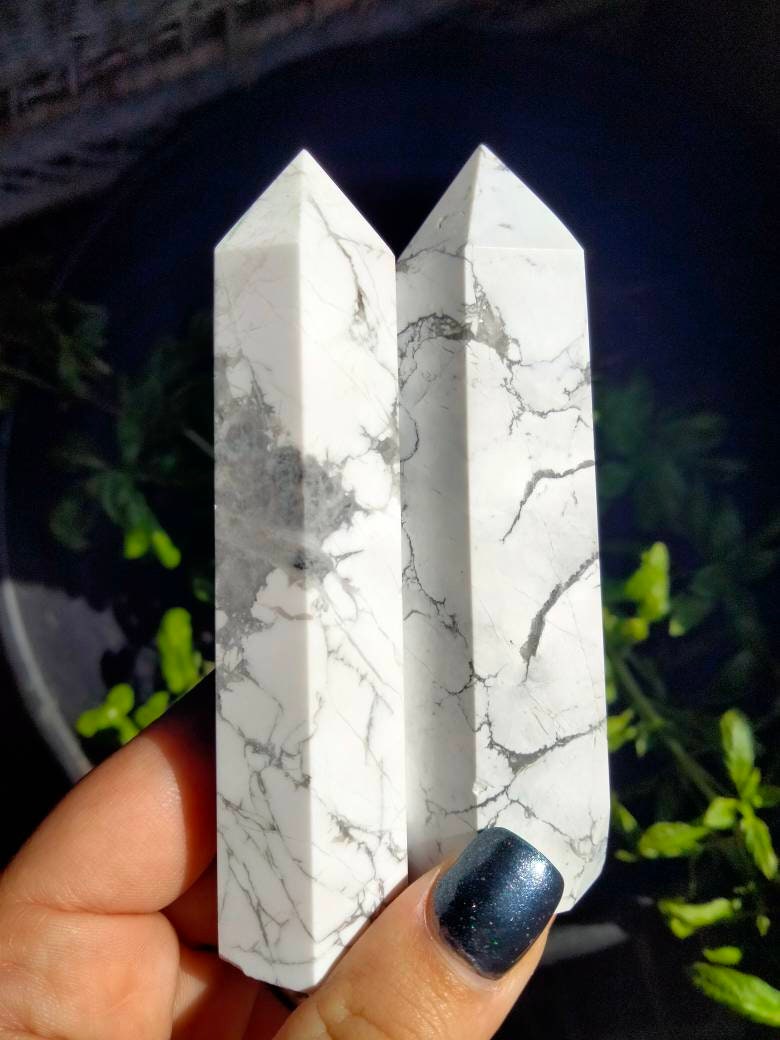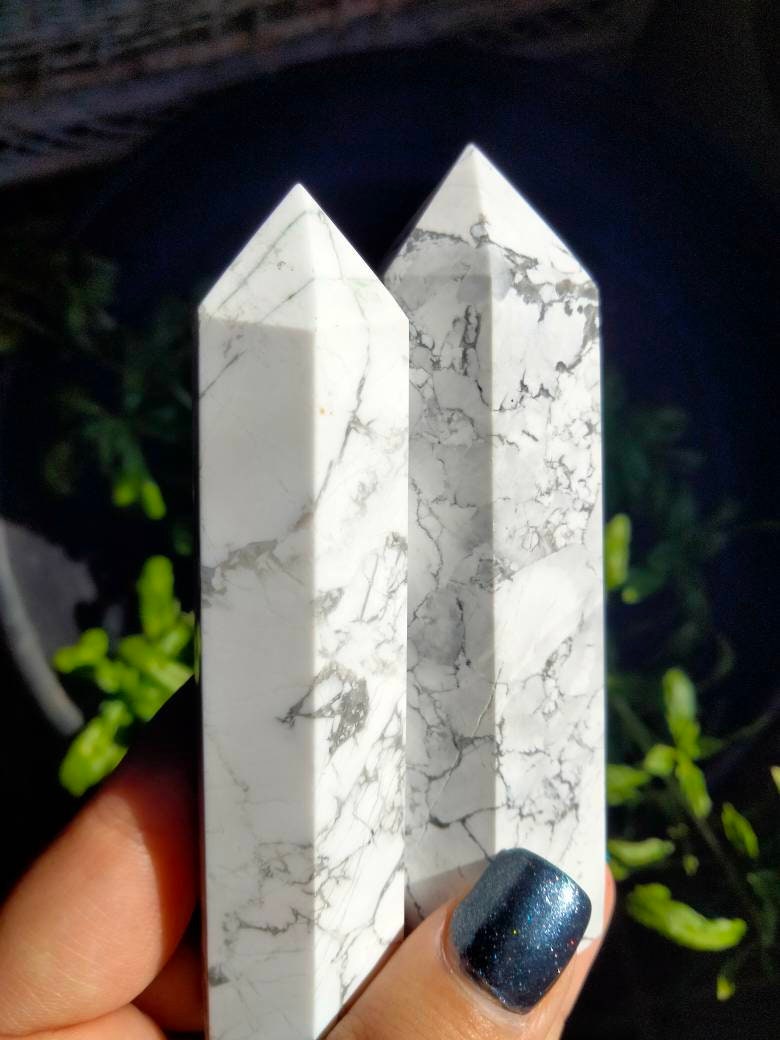Howlite Crystal point
Howlite Crystal point
Howlite points in crystal form is rare. Howlite has a white marble-like appearance with threaded gray, black or brown veins running through it.
Howlite was discovered near Windsor, Nova Scotia in 1868 by Henry How (1828–1879), a Canadian chemist, geologist, and mineralogist. How was alerted to the unknown mineral by miners in a gypsum quarry, who found it to be a nuisance.
Howlite is a very porous stone that takes dye very well, so it is often dyed blue, and sold as turquoise. In fact, the stone is more famous for its ability to look like turquoise, than it is for its own natural state.
Howlite, a calcium borosilicate hydroxide, is a borate mineral found in evaporite deposits.
Mohs scale hardness: 3.5
Crystal class: Prismatic (2/m); (same H-M symbol)
Crystal system: Monoclinic
Crystal habit: Massive to nodular, occurs as tabular prisms flattened parallel to
Color: White, colorless
Optical properties: Biaxial (-), colorless (transmitted light)
Strunz classification: 6.CB.2
Couldn't load pickup availability
Low stock: 2 left
View full details







